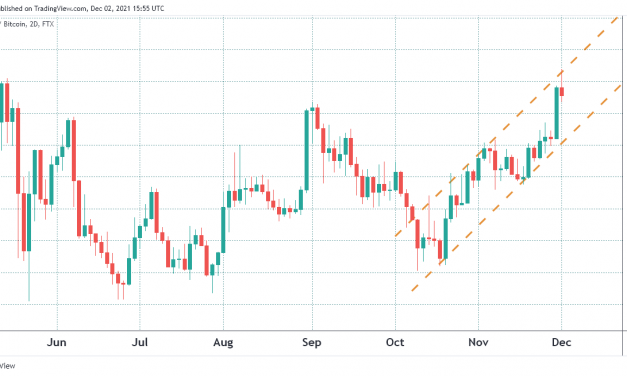Regulatory fears put a damper on Ethereum traders’ $5,000 target
This week Ether (ETH) price came within 2% of its all-time high, and on Dec. 2 the altcoin reached its highest price in Bitcoin (BTC) terms since May 2018. Ether hitting 0.0835 in its BTC pair represents a 229% gain for 2021, but Ether bulls might come out empty-handed from this Friday’s $680 million options expiry.ETH/BTC price at FTX. Source: TradingViewNotice the ascending channel formation initiated in mid-October, which likely reflects the network’s $177 billion total value locked in smart contracts (TVL). Moreover, Ether’s ETH 2.0 beacon chain balance reached an 8.45 million high, which is a 4.5% increase in November.Last week, four Ethereum blockchain-based metaverse projects generated more than $100 million worth of virtual land in nonfungible token (NFT) sales last week, according to reporting by Cointelegraph.However, Ether investors might be concerned about the United States Lower House meeting scheduled for Dec. 8 where the committee will focus on “Digital Assets and the Future of Finance.” Stablecoin issuers and exchange CEOs have been invited, so there’s some potential heat coming from the threat of new regulation.Regardless of the rationale behind ETH’s current 6% ETH price drop, bulls missed the opportunity to secure a $80 profit in Dec. 3 weekly options expiry.Ether options aggregate open interest for Dec. 3. Source: Coinglass.comA broader view using the call-to-put ratio shows a 19% advantage to bears as the $375 million put (sell) instruments have a larger open interest versus the $305 million call (buy) options. The 0.81 indicator is deceptive because the 49% bull run since September caused most of the bearish bets to become worthless.For example, if Ether’s price remains above $4,400 at 8:00 am UTC on Dec. 3, only $68 million worth of those put (sell) options will be available. Therefore, there is no value in the right to sell Ether at $4,400 if it is trading above that price.Bulls are unfazed after today’s 4% price dropBelow are the three most likely scenarios based on the current price action. The number of option contracts available on Dec.3 for bulls (call) and bear (put) instruments vary depending on the expiry ETH price. The imbalance favoring each side constitutes the theoretical profit:Between $4,300 and $4,500: 11,300 calls vs. 15,400 puts. The net result is balanced.Between $4,500 and $4,700: 21,700 calls vs. 7,300 puts. The net result is $65 million favoring the call (bull) instruments.Above $4,700: 26,000 calls vs. 5,000 puts. The net result is $100 million favoring the call (bull) instruments.This crude estimate considers call options being used in bullish bets and put options exclusively in neutral-to-bearish trades. Even so, this oversimplification disregards more complex investment strategies.For instance, a trader could have sold a call option, effectively gaining a negative exposure to Ether above a specific price. But, unfortunately, there’s no easy way to estimate this effect.Bulls need $4,700 to secure a decent-sized profitEther bulls need a 4.7% move from $4,500 to $4,700 to score a $100 million profit. On the other hand, bears simply need to keep Ether price below $4,500 to avoid any losses.As the ETH/BTC chart indicates, there’s some decoupling gaining traction, which might favor Ether holders. Despite the incentives for pushing Ether price above $4,700 ahead of Friday’s expiry, this favourable outcome for bulls seems somewhat distant.Could bears save this week’s options expiry and avoid a $100 million loss? Possibly.The views and opinions expressed here are solely those of the author and do not necessarily reflect the views of Cointelegraph. Every investment and trading move involves risk. You should conduct your own research when making a decision.
Čítaj viac



